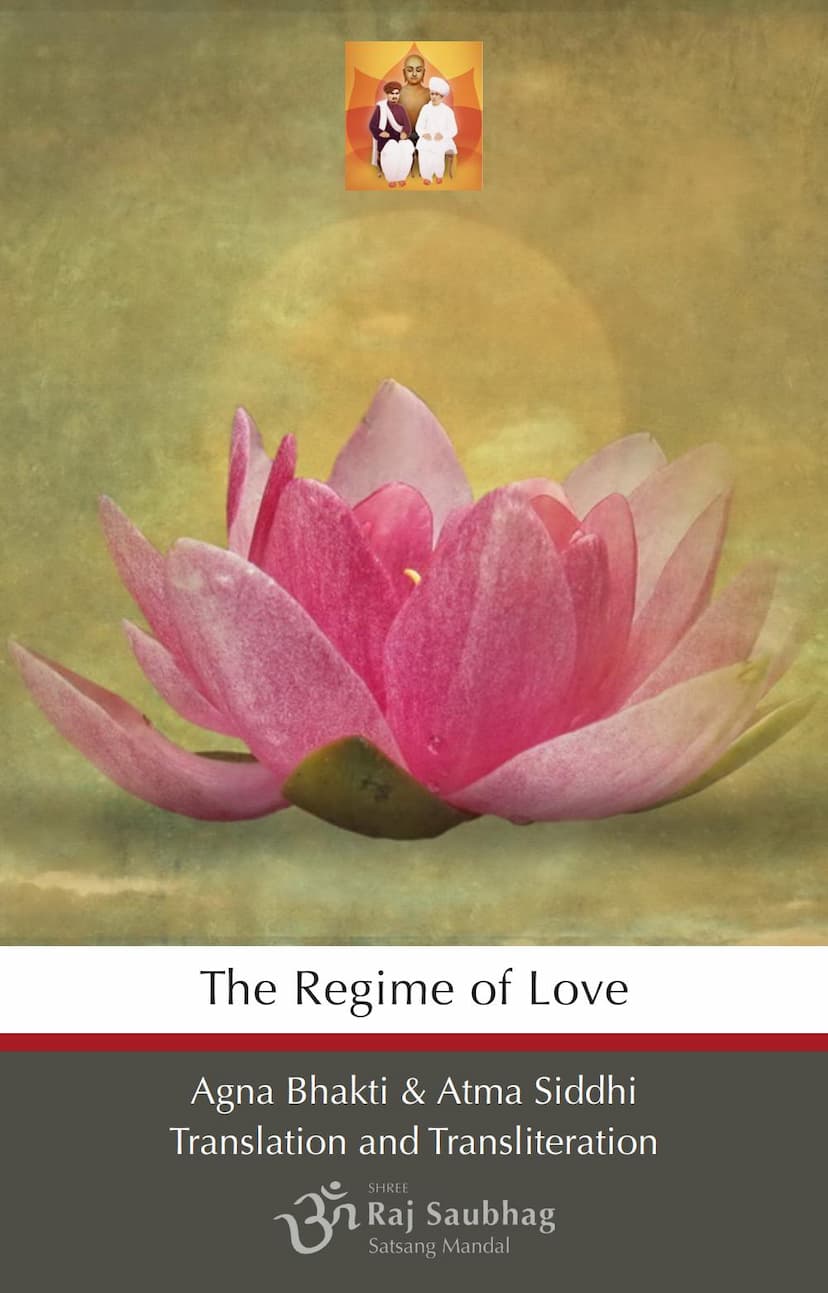Regime Of Love
Added to library: September 2, 2025

Summary
"The Regime of Love" is a Jain text published by Shree Raj Saubhag Satsang Mandal. It is a collection of prose and poetry dedicated to the concept of selfless devotion and the profound impact of love in spiritual life. The book emphasizes that true love for the True God, True Guru, and True Dharma is the path to Moksha (liberation).
Key Themes and Content:
- The True Guru as the Embodiment of Truth: The book highlights that the True Guru is the embodiment and exemplar of truth. Devotion to the True Guru is considered encompassing devotion to the True God and True Dharma.
- The Guru's Guidance as a Spiritual Regimen: The text posits that a living True Guru establishes a daily regimen of spiritual activities for their disciples. Diligent adherence to this regimen is presented as the path to aligning one's efforts with truth and celebrating the Guru's presence.
- The Power of Love and Surrender: The book explores how dedication, devotion, and trust foster love for the spiritual path and the Guru. It emphasizes surrendering ego and self-righteousness at the Guru's feet.
- Contemplation and Immersion in Love: The instructions from the Guru involve not just recitation of the verses but also contemplation, exploration, and immersion in love.
- Content of the Book: The book contains various sections, including:
- Mangalaacharan: Auspicious dedication and invocation.
- Jineshvarne Vaanee: The words of the Jina (Tirthankara).
- Praatahakaalnee Bhaavnaanaan Pado: Poems for reflection in the early hours.
- Tran Maalaa: Three rounds of the rosary.
- Aatma Jaagrutiaan Pado: Verses to awaken the soul.
- Jad ane Chaitanya: A discussion on matter and consciousness.
- Shree Sadguru Bhaktirahasya: The true essence of devotion to the True Guru.
- Kaivalyabeej Shun?: What is the seed of enlightenment?
- Kshamaapanaa: Seeking forgiveness.
- Chha Padno Patra: The letter of six affirmations.
- Veetraagno Kahelo Maarg: The path preached by the equanimously detached Lord.
- Praatahakaalnee Stuti: Early morning hymns.
- Vandan Tathaa Pranipaatstuti: Obeisance and final prayer.
- Saayamkaalnee Stuti Tathaa Devvandan: Evening hymns and veneration of the Lord.
- Shree Aatma-Siddhi Shaastra: The scripture of self-realization.
- Pronunciation Guide: Assistance for readers in pronouncing Gujarati words.
The Aatma-Siddhi Shaastra (Scripture of Self-Realization):
A significant portion of the book is dedicated to the "Shree Aatma-Siddhi Shaastra" by Shrimad Rajchandra. This scripture delves into the nature of the soul (Atma) through a dialogue between a disciple and the Guru.
-
The Six Affirmations (Shatpad): The scripture systematically explains six key affirmations about the soul:
- Aatmaa chhe (The Soul Exists): The existence of the soul is proven through its self-illuminating nature, distinct from the body and senses.
- Aatmaa nitya chhe (The Soul is Eternal): The soul, as pure consciousness, is not created by combinations of matter and is therefore indestructible and eternal.
- Aatmaa kartaa chhe (The Soul is the Author): The soul, through its inclinations and actions, is the author of its own karmas.
- Aatmaa bhoktaa chhe (The Soul Endures): The soul experiences the fruits of its actions, just as consuming poison or sugar has consequences.
- Mokshapad chhe (There is a State Known as Moksha): Moksha is the state of liberation from karmic bondage, achieved by overcoming passions and realizing one's pure nature.
- Te mokshano upaay chhe (There is a Means to Moksha): The path to Moksha involves practices like knowledge, contemplation, and devotion, guided by a True Guru, which helps eliminate karmic bondage.
-
Disciple's Doubts and Guru's Resolutions: The scripture is structured as a Q&A, where the disciple raises doubts regarding the existence, eternality, authorship of karma, endurance of karma, possibility of liberation, and the means to liberation. The Guru then provides clear resolutions based on Jain philosophy and the teachings of the enlightened.
-
Distinction between True and False Seekers: The text also distinguishes between the characteristics of a true seeker (aatmaarthi) and a self-righteous individual (mataarthi), emphasizing the importance of humility, detachment, and adherence to the True Guru's teachings.
-
The Importance of the True Guru: Throughout the Aatma-Siddhi Shaastra and the entire book, the central role of the True Guru is paramount. The Guru's guidance is presented as essential for understanding the self, overcoming delusion, and ultimately achieving liberation.
In essence, "The Regime of Love" is a spiritual guide that advocates for a life lived in devotion, guided by the wisdom of a True Guru. It provides a framework for understanding the self, the nature of reality, and the path to ultimate spiritual freedom through love, contemplation, and adherence to the teachings.